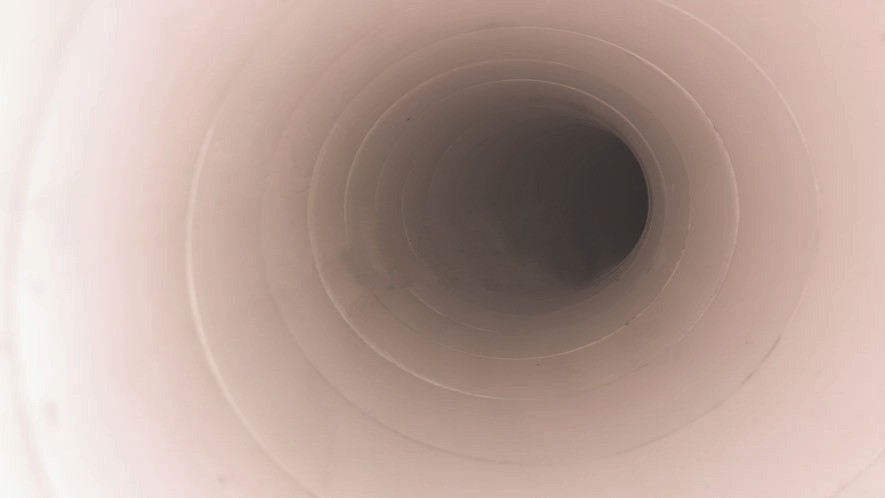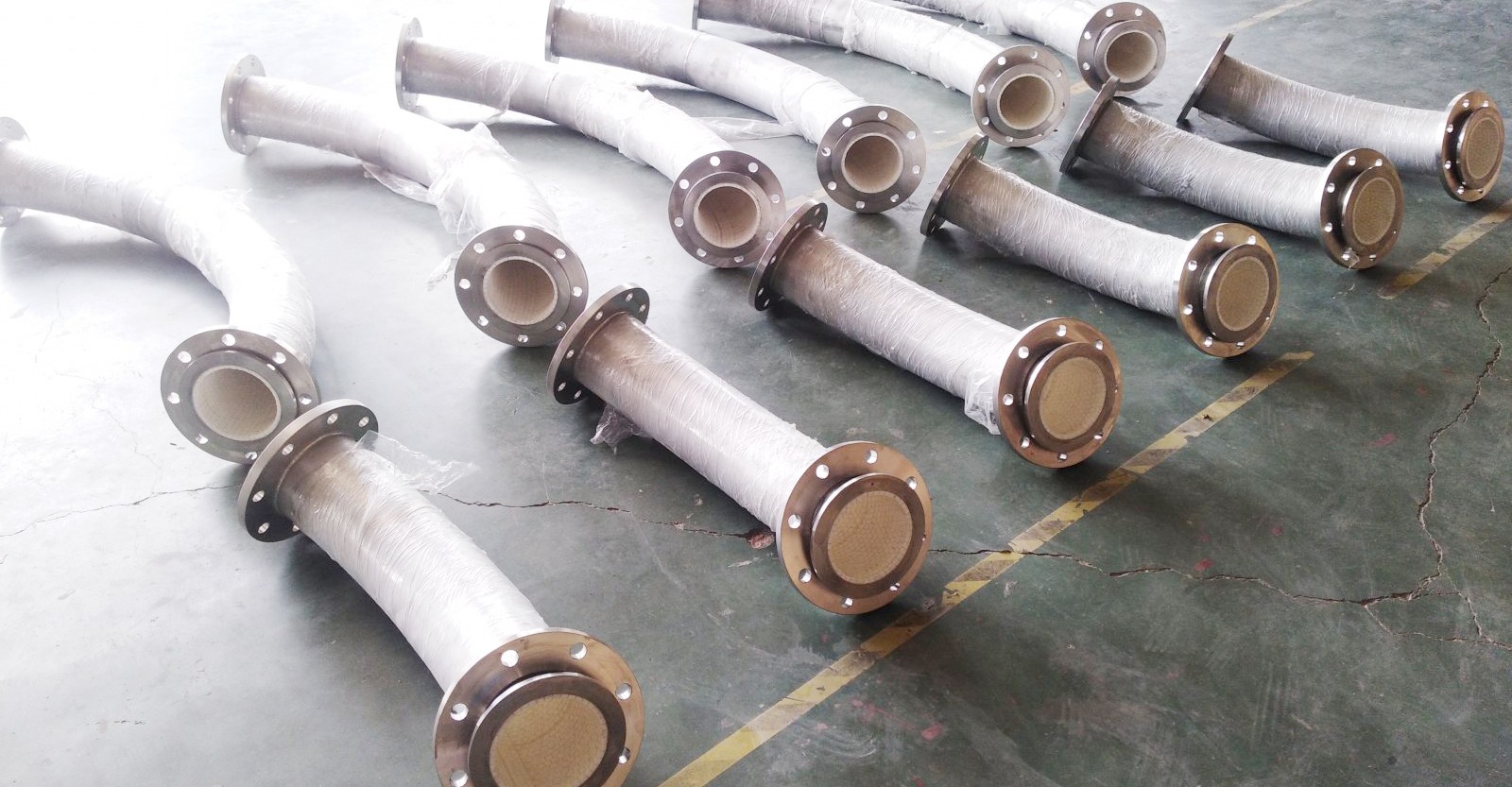Enhancing Lithium Battery Material Transport Efficiency with Wear-Resistant Ceramic Elbows

The production and demand for lithium batteries are rapidly expanding, driven by the global shift toward renewable energy and electric vehicles. In the intricate process of manufacturing these batteries, efficient material handling plays an essential role, especially during the transportation of powdered raw materials that make up the battery’s core components. Wear-resistant ceramic elbows have emerged as critical components in lithium battery production conveyance systems, providing durability, resilience, and significant operational efficiencies over traditional materials like glass or metal.
Wear-resistant ceramic elbows are specialized for high-stress applications, making them a preferred choice in lithium battery production environments. By understanding their benefits, the science behind their materials, and the reasons for their adoption, we can gain insight into why wear-resistant ceramics are transforming not only lithium battery production but also other industries reliant on effective powder handling systems.
Lithium batteries rely on carefully controlled chemical compositions to ensure optimal performance. The process begins with the conveyance of powdered materials—typically metal oxides and other components—that are essential to producing the battery’s cathode and anode layers. These powders, however, present unique challenges: they are abrasive, highly sensitive to contamination, and require precise handling to avoid degradation.
In any production line, smooth conveyance is crucial for maintaining throughput, reducing downtime, and safeguarding the purity of materials. The elbows, or bends, in conveyance pipes play a vital role by connecting different segments of the system. These points, however, are also where abrasive materials cause the most wear due to the directional change, high velocity, and frequent impacts. Wear-resistant ceramic elbows have thus become a necessity for maintaining both operational efficiency and material quality.
To appreciate the advantages of wear-resistant ceramic elbows in industrial applications, we need to explore the unique properties that make them so effective in high-wear environments:
Hardness and Abrasion Resistance: Wear-resistant ceramics, typically made from alumina or zirconia, boast hardness levels significantly higher than those of metals and other traditional materials. This hardness provides exceptional resistance to abrasive forces, allowing these elbows to endure high-speed powder flow without degradation. The Mohs hardness scale often rates these ceramics at 8 or 9, whereas metals generally rank lower, making ceramics much more resistant to wear.
Impact Resistance: The addition of zirconia to alumina to create Zirconia Toughened Alumina (ZTA) improves the impact resistance of the ceramic. Zirconia’s unique properties allow the ceramic to absorb and distribute force more effectively, making ZTA ceramics less prone to cracking or fracturing under pressure compared to standard alumina.
Thermal Stability: Lithium battery production often involves high-temperature processes. Wear-resistant ceramics, especially ZTA, can withstand extreme heat without deforming, ensuring long-term durability even in high-temperature applications. This thermal stability is crucial for systems where materials are conveyed at elevated temperatures.
Chemical Resistance: In addition to physical durability, ceramics are chemically inert, meaning they do not react with the transported materials. This property is essential in preventing contamination and preserving the purity of battery materials.
Lightweight Composition: Ceramics are generally lighter than metal, which reduces the overall weight of the conveyance system. A lighter system can reduce energy costs, as less power is required to move materials through the system. This can lead to significant operational savings over time.
Before the widespread adoption of ceramics, glass was the material of choice for conveyance elbows in lithium battery production. While glass has several advantages, such as preventing metal contamination, it lacks the durability needed for high-impact, high-abrasion environments.
Here’s a breakdown of the limitations of glass elbows and why wear-resistant ceramics provide a superior solution:
Low Impact Resistance: Glass is brittle and lacks the flexibility to withstand the force of high-speed powder movement. This brittleness leads to frequent breakages, requiring costly repairs and downtime.
Shorter Lifespan: Glass is inherently less resistant to wear, especially under continuous abrasive flow. Although it can be tempered for increased strength, this process raises production costs significantly. In contrast, ceramics are built to withstand extended use, providing long-lasting performance with minimal maintenance.
High Replacement Costs: Due to its susceptibility to wear and breakage, glass must be replaced more often than ceramics, leading to higher lifetime costs. Ceramics, by lasting longer, reduce the need for frequent replacements and ultimately lower operational expenses.
Limited Applications: Glass is also limited in terms of temperature resistance and cannot endure the same extreme heat as ceramics. This restricts its use in applications where heat and abrasion are present simultaneously, such as in lithium battery production.
Chemical Vulnerability: While glass is non-reactive to many chemicals, it can suffer from erosion in certain conditions. Ceramics, particularly alumina and zirconia-based materials, exhibit greater chemical stability across a wider range of environments.

Wear-resistant ceramics are primarily composed of alumina (Al₂O₃) and, in some cases, zirconia (ZrO₂). These materials are chosen for their unique physical properties, which contribute to the hardness, durability, and impact resistance of ceramic elbows. Here’s an in-depth look at these materials:
Alumina (Al₂O₃): Alumina, or aluminum oxide, is a highly stable compound with impressive hardness and corrosion resistance. It’s commonly used in industrial applications where wear resistance is a top priority. Alumina ceramics are known for their ability to resist abrasion and operate effectively at high temperatures, making them a popular choice for various manufacturing processes.
Zirconia (ZrO₂): Zirconia is another high-performance ceramic known for its toughness and thermal stability. Unlike alumina, zirconia can withstand higher impact forces without fracturing. When zirconia is added to alumina to create ZTA, the resulting material offers a balance of hardness and impact resistance that enhances its performance in dynamic conveyance systems.
Zirconia Toughened Alumina (ZTA): By combining alumina’s hardness with zirconia’s toughness, ZTA ceramics deliver the best of both worlds. This composite material provides enhanced resistance to wear, impact, and thermal stress, making it ideal for demanding applications. ZTA is especially useful in lithium battery production, where the balance between wear resistance and impact resilience is critical for maintaining system integrity.
While wear-resistant ceramics outperform glass in conveyance applications, metals and polymers are also common materials used in manufacturing systems. Here’s how ceramics compare to these alternatives:
Metal Elbows: Metals, particularly stainless steel, are commonly used in industrial conveyance due to their strength and durability. However, metals are more susceptible to corrosion and do not offer the same level of abrasion resistance as ceramics. Additionally, metals can contaminate sensitive materials if they corrode or shed particles during use. In lithium battery production, this contamination risk is unacceptable, making ceramics a safer choice.
Polymer Elbows: Polymers, such as polyethylene and polyurethane, offer a lightweight and low-cost solution for conveyance systems. However, polymers lack the durability of ceramics and can degrade under continuous abrasion, particularly in high-temperature settings. For high-purity applications, polymers also pose contamination risks, as they may release microplastics into the conveyed material. Consequently, polymers are generally unsuitable for lithium battery production.
Cost Comparison: While metal and polymer elbows may have lower upfront costs, wear-resistant ceramic elbows provide a better return on investment due to their longevity and reduced maintenance needs. Over time, the durability of ceramics translates to lower replacement costs, reduced downtime, and greater overall efficiency.
In high-production environments, the need for frequent maintenance can disrupt operations, leading to lower productivity and higher operational costs. By extending the life of conveyance systems and reducing the frequency of replacements, ZTA ceramic elbows play an essential role in minimizing downtime. This reduction in maintenance requirements is particularly valuable in lithium battery manufacturing, where continuous production is necessary to meet growing demand.
Maintenance Intervals: Wear-resistant ceramics have a lifespan up to 10 times longer than that of glass or metal components, significantly extending maintenance intervals. This longevity allows manufacturers to allocate resources more efficiently, as maintenance efforts can be focused on other critical areas of production.
Cost Savings: With longer-lasting components, companies save on replacement parts and labor costs associated with frequent maintenance. These savings can be substantial over the lifespan of a conveyance system, particularly in industries with high production volumes.
Operational Efficiency: Reduced maintenance requirements allow production to continue with fewer interruptions. In the lithium battery industry, where demand is steadily increasing, the ability to sustain continuous production without frequent shutdowns is a significant advantage.
While wear-resistant ceramic elbows are particularly beneficial in lithium battery production, their durability and versatility make them suitable for a wide range of industries. Here are a few examples of sectors where these ceramics play a vital role:
Mining and Mineral Processing: In the mining industry, materials like coal, ore, and gravel are conveyed at high speeds and volumes. Wear-resistant ceramics are essential for maintaining the integrity of conveyance systems in these harsh conditions.
Cement Manufacturing: The abrasive nature of cement particles demands durable conveyance materials. Ceramic elbows are often used in cement production to prevent excessive wear and ensure efficient material handling.
Chemical Processing: Chemical plants often handle corrosive and abrasive substances, making ceramics ideal for conveyance systems. Their chemical stability and wear resistance help maintain safety and efficiency in these environments.
Pharmaceuticals and Food Production: In industries where material purity is crucial, ceramic elbows prevent contamination and provide a durable solution for conveying powders and other sensitive substances.
As the lithium battery industry continues to evolve, several trends are emerging that could impact the use and development of wear-resistant ceramics:
Advanced Ceramic Composites: Researchers are exploring new ceramic composites that combine multiple materials to achieve even higher performance levels. For example, adding silicon carbide to ZTA ceramics could enhance wear resistance further, offering an even more durable option for demanding applications.
Sustainability Initiatives: With an increasing focus on sustainability, companies are looking for eco-friendly production methods. Wear-resistant ceramics, with their long lifespan and recyclability, align well with these goals. As a result, they may become a preferred choice in industries striving to reduce waste and energy consumption.
Automation and Predictive Maintenance: Advances in technology, such as predictive maintenance, are transforming manufacturing. By integrating sensors into conveyance systems, companies can monitor the wear of ceramic elbows in real-time and replace them only when necessary. This approach reduces waste and ensures that components are replaced at optimal intervals.
Expansion into New Industries: As the benefits of wear-resistant ceramics become more widely recognized, we may see their adoption in additional sectors. Industries like electronics manufacturing, aerospace, and defense could benefit from the durability and resilience of ceramic materials.
The adoption of wear-resistant ceramic elbows in lithium battery production and other high-demand industries represents a significant advancement in material handling technology. These ceramics, with their unparalleled hardness, impact resistance, and chemical stability, are essential for optimizing conveyance systems and reducing maintenance costs. Their ability to prevent contamination and withstand abrasive forces makes them invaluable in applications where material purity and durability are paramount.
As industries continue to prioritize efficiency, sustainability, and cost-effectiveness, the role of wear-resistant ceramics will only grow. By extending the lifespan of key components, reducing downtime, and ensuring consistent production, wear-resistant ceramic elbows are set to play a crucial role in the future of manufacturing.
Sanxin New Materials Co., Ltd. specializes in ceramic milling balls, nanoparticles, nanopowders, wear-resistant ceramics, and abrasion-resistant ceramics. For more information, contact us on WhatsApp at +86 19070858212 or via email at sales@beadszirconia.com

Submit your demand,
we will contact you ASAP.

Sanxin New Materials Co., Ltd. focus on producing and selling ceramic beads and parts such as grinding media, blasting beads, bearing ball, structure part, ceramic wear-resistant liners, Nanoparticles Nano Powder

